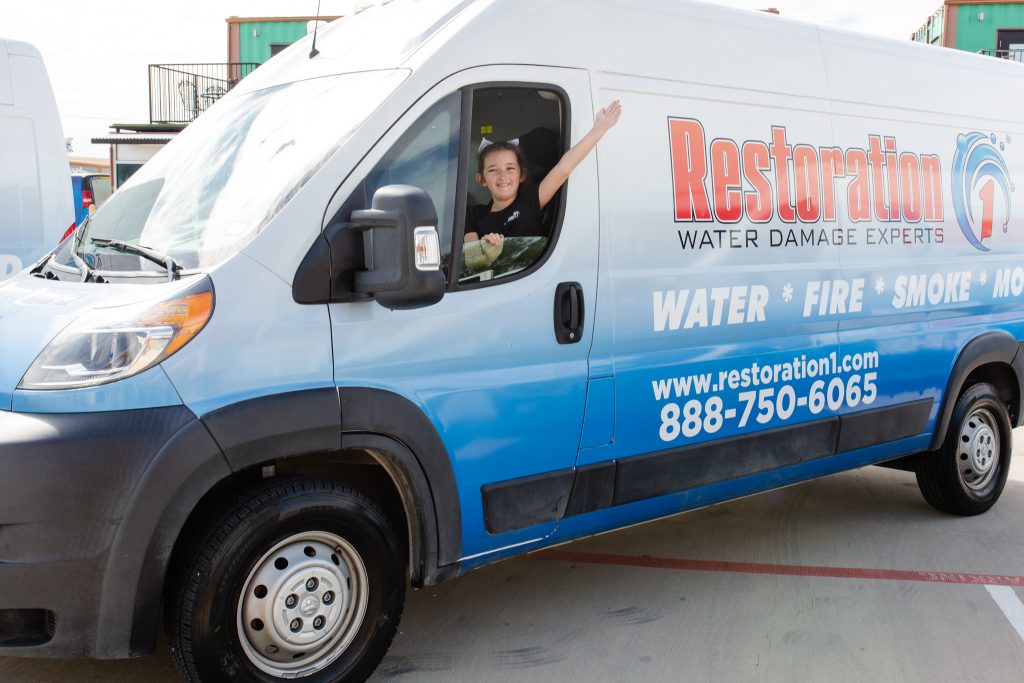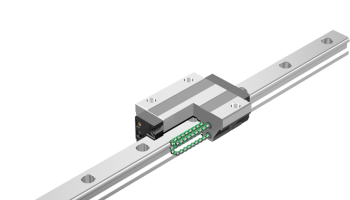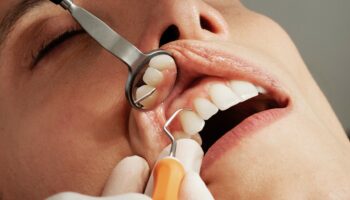Key Takeaways:
- Water damage can lead to structural issues, health problems, and financial losses.
- Water damage has economic and environmental impacts.
- Prompt action is crucial for water restoration to prevent further damage and health risks.
- Oak Harbor has abundant natural water resources that contribute to the ecosystem and the local economy.
- Community engagement is important for long-term water restoration efforts.
- Innovative strategies like green infrastructure and water conservation programs are used to preserve water sources in Oak Harbor.
- The water restoration process involves damage assessment, water extraction and drying, and mold mitigation.
- Oak Harbor utilizes collaborative approaches involving government initiatives, non-profit organizations, and individual participation.
- Individuals can contribute to water restoration through water conservation practices.
The Importance of Water Restoration
Water damage is a significant threat to communities, wreaking havoc on homes, businesses, and the environment. Understanding the implications and taking prompt action are crucial to minimizing the long-term effects. In this section, we will explore the threats of water damage, the economic and environmental impact, and why immediate restoration efforts are essential.
- Understanding the Threats of Water Damage
Water damage can have detrimental effects on both the structural integrity of buildings and the health of occupants. From leaking roofs to burst pipes and flooding, water infiltration can lead to mold growth, rotting wood, and the weakening of foundations. These issues not only compromise the safety of the property but also create an unhealthy living environment.
Furthermore, excess moisture can damage valuable possessions such as furniture, electronics, and personal belongings. In severe cases, water damage can render these items unsalvageable, resulting in significant financial loss for individuals and businesses.
- The Economic and Environmental Impact of Water Damage
The economic impact of water damage extends beyond the immediate costs of repairs and replacements. Businesses may experience interruptions in operations, leading to lost revenue and potential layoffs. Additionally, insurance premiums can increase, putting additional financial strain on individuals and businesses.
From an environmental perspective, water damage can contaminate natural water sources, leading to water pollution. This pollution can harm aquatic ecosystems and threaten the biodiversity of flora and fauna. It is crucial to recognize the interconnectedness between water restoration efforts and the preservation of the environment.
- Why Prompt Action is Crucial for Water Restoration
Water damage requires immediate attention to prevent further deterioration and mitigate potential health risks. The longer the water sits, the more damage it can cause, increasing the complexity and costs of restoration efforts.
Swift action is essential in preventing mold growth, as mold can begin to develop within 24-48 hours of water exposure. Once mold takes hold, it becomes challenging and expensive to remediate. Mold not only affects the structural integrity of buildings but can also trigger respiratory issues, allergies, and other health problems.
By taking prompt action, property owners can significantly minimize the damage caused by water infiltration and ensure a safer and healthier environment for occupants.
Reviving Oak Harbor: Restoring and Preserving Water Resources
Oak Harbor is blessed with abundant natural water resources, including rivers, lakes, and wetlands. These resources play a vital role in the ecosystem’s health and the well-being of local communities. In this section, we will explore the remarkable water resources of Oak Harbor, the role of communities in water restoration efforts, and innovative strategies to preserve and protect these sources.
- Exploring the Natural Water Resources of Oak Harbor
Oak Harbor is nestled in a region with rich water resources that support diverse aquatic species and provide essential ecosystem services. The city is home to pristine lakes and rivers, including Oak Harbor Lake and the Quinault River, which serve as critical sources of drinking water, recreation, and habitat for wildlife.
These natural water resources not only contribute to the city’s scenic beauty but also offer opportunities for outdoor activities such as boating, fishing, and swimming. Oak Harbor’s waterways attract nature enthusiasts, promoting tourism and supporting the local economy.
- The Role of Communities in Water Restoration Efforts
While government organizations and nonprofit entities play a significant role in water restoration, the active involvement of local communities is crucial for the long-term sustainability of these efforts. Community engagement fosters a sense of ownership and responsibility, encouraging individuals to take part in water restoration initiatives.
Community-led projects, such as river cleanups and water quality monitoring programs, not only contribute to immediate restoration efforts but also raise awareness about the importance of protecting and preserving water resources. Citizen scientists can help collect valuable data and identify potential sources of pollution, leading to informed decision-making and targeted restoration measures.
- Innovative Strategies to Preserve Water Sources in Oak Harbor
Preserving water sources requires a multi-faceted approach that includes conservation, stormwater management, and sustainable land use practices. Oak Harbor has implemented various innovative strategies to protect its water resources, ensuring their availability for future generations.
One such strategy is the implementation of green infrastructure, which includes rain gardens, permeable pavement, and rooftop gardens. These nature-based solutions help capture and filter stormwater, reducing the amount of pollutants entering water bodies and replenishing groundwater supplies.
Furthermore, water conservation programs, efficient irrigation systems, and public education campaigns promote responsible water use and help reduce the demand on existing water sources. Oak Harbor’s commitment to sustainable practices sets an example for other communities facing similar water challenges.
The Process of Water Restoration: From Damage to Recovery
Efficient water restoration Oak Harbor involves a systematic approach that addresses the damage caused by water infiltration and takes measures to prevent future occurrences. In this section, we will delve into the process of water restoration, encompassing the assessment of damage, best practices for water extraction and drying, and effective mold mitigation techniques.
- Assessing the Extent of Water Damage in Oak Harbor
Before initiating water restoration efforts, it is crucial to assess the extent of the damage caused by water infiltration. Trained professionals evaluate the affected areas, identifying structural weaknesses, assessing the severity of water saturation, and determining the potential for mold growth.
This assessment helps develop a comprehensive restoration plan, outlining the necessary steps to restore the affected property to its pre-damaged condition. It also enables restoration teams to prioritize actions based on the level of urgency and potential health risks.
- Best Practices for Water Extraction and Drying
Once the assessment is complete, water extraction becomes the next crucial step in the restoration process. Powerful pumps, extractors, and dehumidifiers are utilized to remove standing water and excess moisture from the affected areas. This process helps prevent further damage and minimizes the risk of mold growth.
After extraction, thorough drying is essential to remove any remaining moisture. Industrial-grade air movers and dehumidifiers are strategically placed to facilitate the evaporation of moisture from walls, floors, and other surfaces. Continuous monitoring ensures that the drying process is effective and prevents the growth of mold or mildew.
- Mitigating Mold and Preventing Future Water Damage
Mold can quickly develop in areas with excess moisture, posing serious health risks and compromising the integrity of structures. In water restoration, mold mitigation is a critical component that involves the identification, containment, and removal of mold.
Specialized techniques such as air filtration, containment barriers, and antimicrobial treatments are employed to eliminate mold colonies and prevent spore dispersion. Additionally, restoration teams provide recommendations and guidance on how to prevent future water damage, such as maintaining proper ventilation, repairing leaks promptly, and implementing moisture control measures.
Collaborative Approaches: Oak Harbor’s Community Engagement
Water restoration in Oak Harbor is a collaborative effort that involves both government initiatives and the participation of non-profit organizations and individual citizens. In this section, we will explore the various approaches taken by Oak Harbor to engage the community in water restoration, including government initiatives, volunteering opportunities, and individual water conservation tips.
- Government Initiatives in Water Restoration
The local government of Oak Harbor recognizes the importance of water restoration and has implemented several initiatives to protect and enhance water resources. These initiatives involve the development and enforcement of regulations related to water quality, stormwater management, and conservation.
The city also invests in infrastructure improvements, such as upgrading wastewater treatment facilities and implementing green stormwater infrastructure projects. These proactive measures not only ensure the efficient management of water resources but also contribute to the overall sustainability of the community.
- Non-Profit Organizations and Volunteering Opportunities
Non-profit organizations play a vital role in Oak Harbor’s water restoration efforts, providing resources, expertise, and community outreach. These organizations collaborate with government agencies, businesses, and volunteers to organize clean-up events, educational programs, and restoration projects.
Volunteering opportunities are available for individuals interested in getting involved in water restoration. Local conservation groups often organize river clean-ups, wetland restoration projects, and water quality monitoring activities. These hands-on experiences allow participants to contribute directly to the restoration and preservation of Oak Harbor’s water resources.
- Empowering Individuals: Tips for Water Conservation in Oak Harbor
Every individual in Oak Harbor can play a role in water conservation and restoration. By adopting simple habits and making conscious choices, residents can contribute to the preservation of water resources. Here are some tips for water conservation in Oak Harbor:
- Install water-saving fixtures such as low-flow faucets, showerheads, and toilets.
- Fix leaks promptly to prevent water waste.
- Water outdoor plants and lawns during cooler hours to minimize evaporation.
- Collect rainwater for irrigation purposes.
- Educate yourself and others about responsible water use and conservation practices.
By implementing these tips and spreading awareness, individuals can become advocates for water conservation, contributing to the larger goal of restoring and preserving the water resources of Oak Harbor.
FAQ
Question: What are the threats of water damage? – Water damage can lead to structural issues, health problems, and financial losses. It can cause mold growth, rotting wood, weakening of foundations, and damage to valuable possessions.
Question: What is the economic and environmental impact of water damage? – Water damage can result in interruptions in business operations, lost revenue, increased insurance premiums, and potential layoffs. Additionally, water damage can contaminate natural water sources and harm aquatic ecosystems.
Question: Why is prompt action crucial for water restoration? – Prompt action is necessary to prevent further deterioration and mitigate potential health risks. Delay can lead to increased damage, higher restoration costs, and the growth of mold, which can affect both the structural integrity of buildings and human health.
Question: What are the natural water resources in Oak Harbor? – Oak Harbor is home to pristine lakes and rivers, including Oak Harbor Lake and the Quinault River. These water resources serve as critical sources of drinking water, recreation, and habitat for wildlife.
Question: What is the role of communities in water restoration efforts? – Community engagement is crucial for the long-term sustainability of water restoration efforts. Local communities can participate in projects such as river cleanups and water quality monitoring programs to contribute to immediate restoration efforts and raise awareness about the importance of protecting and preserving water resources.
Question: What are innovative strategies to preserve water sources in Oak Harbor? – Oak Harbor implements innovative strategies like green infrastructure, water conservation programs, and public education campaigns to preserve and protect water sources. Green infrastructure includes rain gardens, permeable pavement, and rooftop gardens, while water conservation programs focus on reducing water demand and promoting responsible water use.
Question: What is involved in the process of water restoration? – The process of water restoration includes damage assessment, water extraction and drying, and mold mitigation. Trained professionals assess the extent of water damage, remove standing water and excess moisture, and prevent mold growth.
Question: How is Oak Harbor engaging the community in water restoration? – Oak Harbor engages the community through government initiatives, non-profit organizations, and individual participation. The local government implements initiatives related to water quality, stormwater management, and conservation. Non-profit organizations collaborate with government agencies, businesses, and volunteers to organize events, programs, and restoration projects. Individuals can contribute to water restoration through volunteering and adopting water conservation practices.
Useful Resources:
- United States Environmental Protection Agency (EPA)
- American Water Works Association (AWWA)
- National Water Services Summit
- U.S. Department of the Interior – Water Resources
- EcoWatch – Water Section
- United States Geological Survey (USGS)
- National Weather Service – Northwest River Forecast Center
- Alliance for the Chesapeake Bay







